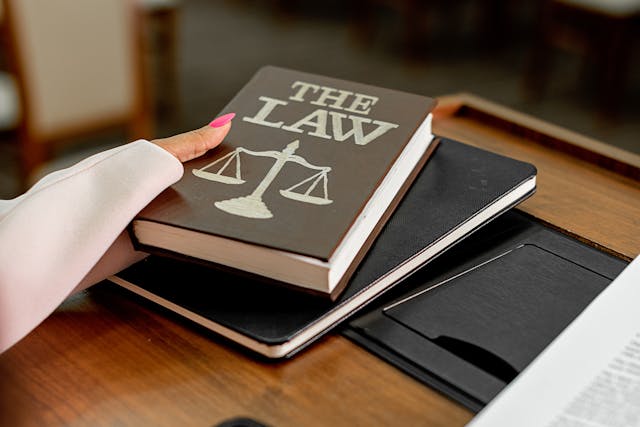No matter how well you prepare, life often brings unexpected surprises. From unexpected medical bills to car repairs or job loss, emergencies can pop up when you least expect them. These surprises can put a serious strain on your finances if you aren’t ready. The good news? With some thoughtful preparation, you can protect yourself and your family from unnecessary stress. Building financial security doesn’t have to be complicated. It starts with small, steady steps that add up over time.
If you’re wondering how to get started, you’re not alone. Many people feel overwhelmed at the idea of setting aside money for emergencies while managing everyday expenses. The key is to break the process down into manageable parts so you can make steady progress. Let’s walk through how you can prepare for life’s unexpected expenses, starting with figuring out how much you should save.
Calculate How Much You Need in an Emergency Fund
Before you can build an emergency fund, you need to know how much you’re aiming for. Financial experts often recommend setting aside three to six months’ worth of living expenses to cover emergencies. This fund acts as a safety net, helping you pay for essentials like rent, groceries, and utilities if something unexpected happens. But how do you figure out what that number looks like for your situation? Figuring out exactly how much that means for you depends on your lifestyle, household needs, and cost of living. That’s why many people find it helpful to start with a tool like a 3 month emergency fund calculator online, which can give you a personalized estimate based on your actual expenses and help you set a realistic savings goal.
Start Small and Build Consistently
Once you know your target, it’s easy to feel like it’s an impossible goal, especially if you’re just starting. But the truth is, you don’t need to save the full amount overnight. The most important thing is to start small and build your fund gradually. Even setting aside a few dollars a week can add up over time. The key is to stay consistent and make saving a regular habit.
Consider setting a small, achievable savings goal for your first month. As you get used to setting money aside, you can slowly increase the amount. Remember, it’s not about how quickly you reach the final number. It’s about making steady progress and building a cushion that will protect you when you need it most.
Create a Budget That Supports Your Savings Goal
If you’re not sure where the extra money for your emergency fund will come from, take a closer look at your budget. Many people are surprised to find small areas where they can cut back without feeling deprived. Maybe it’s eating out less often, canceling a subscription you don’t use, or finding a more affordable option for a monthly service. These small changes can free up money to put toward your emergency savings.
One of the simplest ways to stay on track is to automate your savings. Set up an automatic transfer from your checking account to your emergency fund each month. When saving happens automatically, it’s easier to stay consistent, and you’re less tempted to skip a month.
Keep Emergency Funds Separate and Easy to Access
It’s tempting to keep all your money in one place, but when it comes to emergency savings, it’s smart to keep the funds in a separate account. It helps reduce the temptation to dip into the money for non-emergencies and makes it easier to see how much you’ve set aside. A dedicated savings account or money market account works well because it keeps your funds safe while still allowing you quick access if you need it.
The goal is to have the money available when life throws you a curveball without making it too easy to spend on something that isn’t truly an emergency. Keeping it separate also helps you track your progress as you build your fund.
Revisit and Adjust Over Time
Your financial situation will change over time, so it’s important to revisit your emergency fund regularly. Check-in on your savings goal at least once or twice a year or whenever you have a major life change, like getting married, having a baby, or buying a home. As your expenses change, your emergency fund target should change, too.
Maybe you’ve moved to a more expensive area or taken on new responsibilities that require a bigger safety net. On the other hand, you might have paid off debt or reduced your expenses, meaning your target can be adjusted downward. The important thing is to stay flexible and make sure your fund continues to match your needs.
It’s also a good idea to review where your emergency fund is kept. Make sure your money remains in a secure, easily accessible account that still offers reasonable returns. Periodic reviews not only help ensure your savings goal still fits your life but also allow you to spot opportunities to improve how your money is working for you. Regular check-ins help you stay confident that you’re prepared for whatever comes next.
Small Steps Lead to Big Security
Building financial security takes time, but every small step you take moves you closer to peace of mind. Setting up an emergency fund isn’t just about preparing for the worst. It’s about giving yourself confidence that you can handle life’s surprises without derailing your budget or your goals. Start by calculating what you need, setting a plan to save consistently, and checking in regularly to stay on track.
You don’t have to do it all at once. Focus on steady progress, celebrate small milestones, and remind yourself that you’re investing in your future security. By taking action today, even if it’s just saving a small amount. You’re laying the foundation for a stronger, more resilient financial future. And that’s a goal worth working toward.




